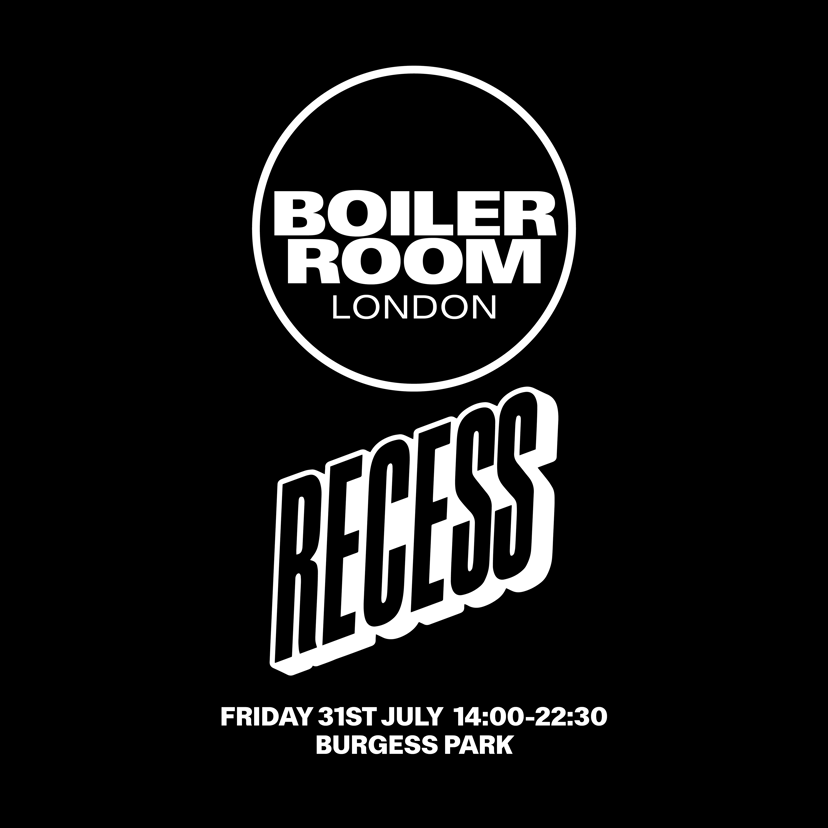
Do Rave Videos Distort the Memory of Gabber?
Can we ever truly understand a scene through archived videos?
For the generation who weren’t around to enjoy it the first time, rave archives have long offered an extreme close-up of gabber at its height, but the intense snapshots they provide put them at risk of misrepresenting the reality. So where else should we look? Which projects offer a glimpse of the human stories behind the fastest chapter in club music history?
It’s faintly unbelievable that early editions of Thunderdome, the infamous gabber and hardcore party launched in 1992, ever happened. That such punishing, polarising sounds could fill Dutch convention centres to capacity, at a time when the internet was in its infancy, must sound impossible to people who weren’t there—and maybe some who were. Yet happen they did, as evidenced by the hours of footage uploaded and enjoyed by happily-aging ravers-turned-parents, and younger converts.
“Thank god it was documented,” says Nikita Sarukhanov, the London-based moderator of Instagram-based rave archive UKGabbers. “I’m sure there are some people who don’t want the clips online, but parties like that are never going to happen again.” This isn’t strictly true, Thunderdome has returned with 40,000 people came through to the 2017 edition, but Sarukhanov doubts quite what was happening back then would be allowed to go ahead today.
Perhaps it’s mild romanticisation on his part. Sarukhanov is a new generation gabber, and too young to have attended the original raves. Yet watching the videos, the allure of the past is undeniable. Poorly lit and roughly cut, there’s a gleeful anarchy in the air. Footage from Thunderdome Oberhausen 1995 features live outfit Neophyte, a gripping shambles of a group belting out wall-of-noise stompers on full-size keyboards, accompanied by a booming MC and live guitar. Anything goes, so long as it pumps. “Rotterdam is Hard!!!” reads the accompanying text, superimposed on the tape. Down the front, a gang of frenzied gabbers make short work of the stage’s security fence. The camera pans out, and the immensity of the endeavour becomes clear: there are thousands of people. An army, hakken dancing in unison.
For today’s younger Gabbers, says Sarukhanov, the history is a point of pride. While it’s important to note his page champions today’s scene—at the time of writing, his IG stories are a frantic blur of clips from Moscow’s Galaxydrome festival—the old footage is an essential resource for fans of all ages. Personal favourites of his include Dr Macabre at Megarave Rotterdam 1999, and a young Dj Akira at Thunderdome 98. “Although some people would probably argue that’s not gabber,” he adds. “Once it hits over 200 beats per minute, that’s terror we’re talking about.”
Responsible for making much of this footage available are gabbers like Zanjay Chattarpal. He runs GabberManzion Holland, a YouTube channel with over 20,000 subscribers and over a thousand uploads of tracks, documentaries and rave footage, laboriously digitised from the VHS tapes he’s collected since the 90s. He remembers the moment in 1993 when, as a youngster, gabber forced its way into his house, and his life. “I was watching the television, and there was an advert for Thunderdome IV,” he says, referring to The Devil’s Last Wish compilation. “It stole my heart, and it’ll stay that way till I die.”
He also remembers another set of cameras documenting the gabbers: media outlets who soon enough were fuelling hysteria over the hardcore rave scene’s links to drug abuse, hooliganism, and uglier phenomena like far-right extremism. Gabber and its aesthetic slipped into the country’s collective consciousness via unfair representation, and gabbers became the target of revulsion and parody. Hardcore mainstay The Prophet would later describe the chart success of comedy gabber acts like Hakkuhbar as a death blow for the music.
“The gabbers who showed up on the news are what I’d call in Dutch ‘Zwabbers’, or wannabe gabbers,” says Chattarpal. “Gabber is something in the heart. It means friendship. It doesn’t matter what skin colour you are.” And even if these ravers were wasting their lives, adds Sarukhanov, the media still got it wrong. “It’s not okay to ignore that these were real people with real feelings. It could be that the gabber scene was the only place they felt comfortable.”
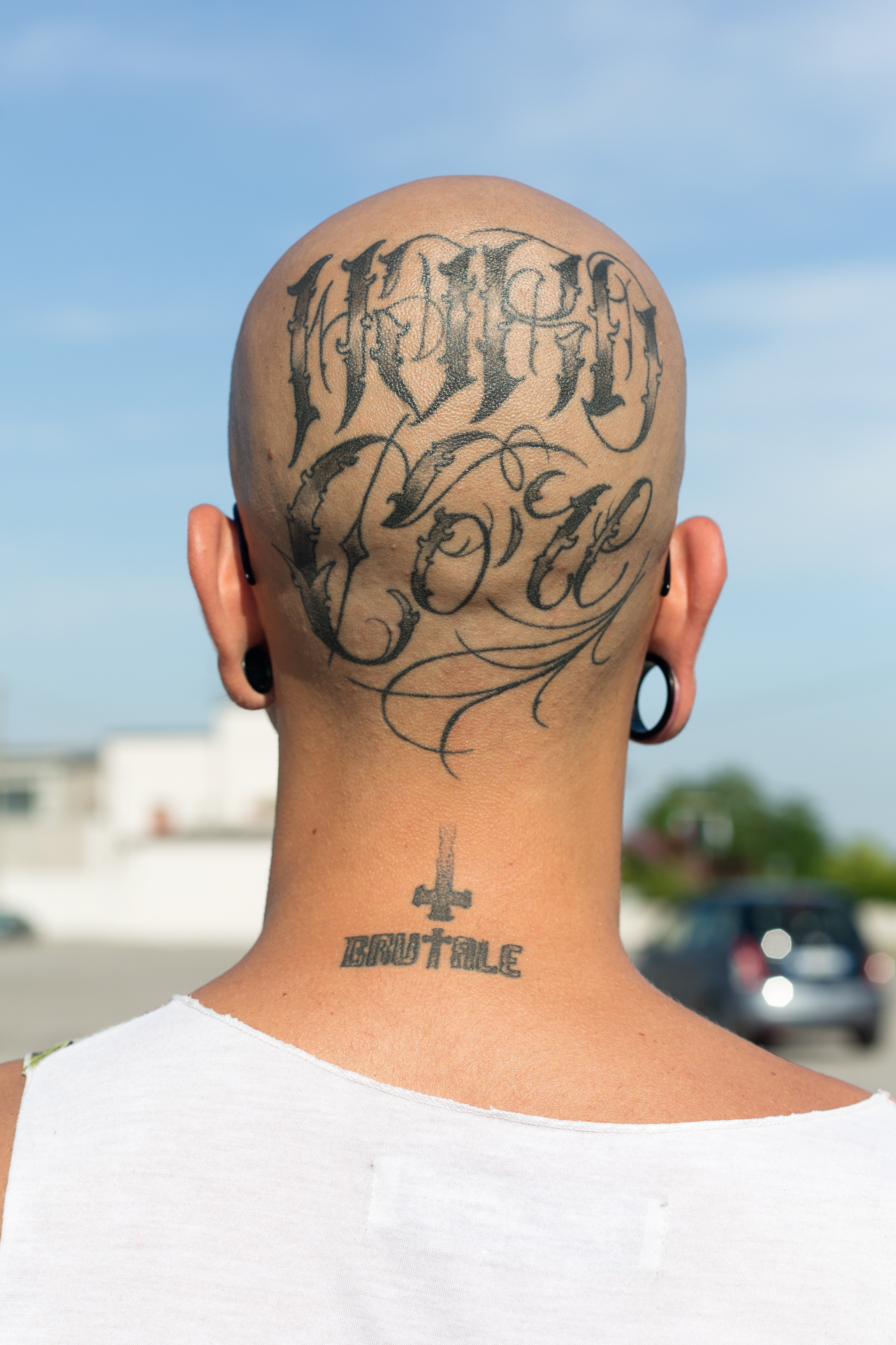
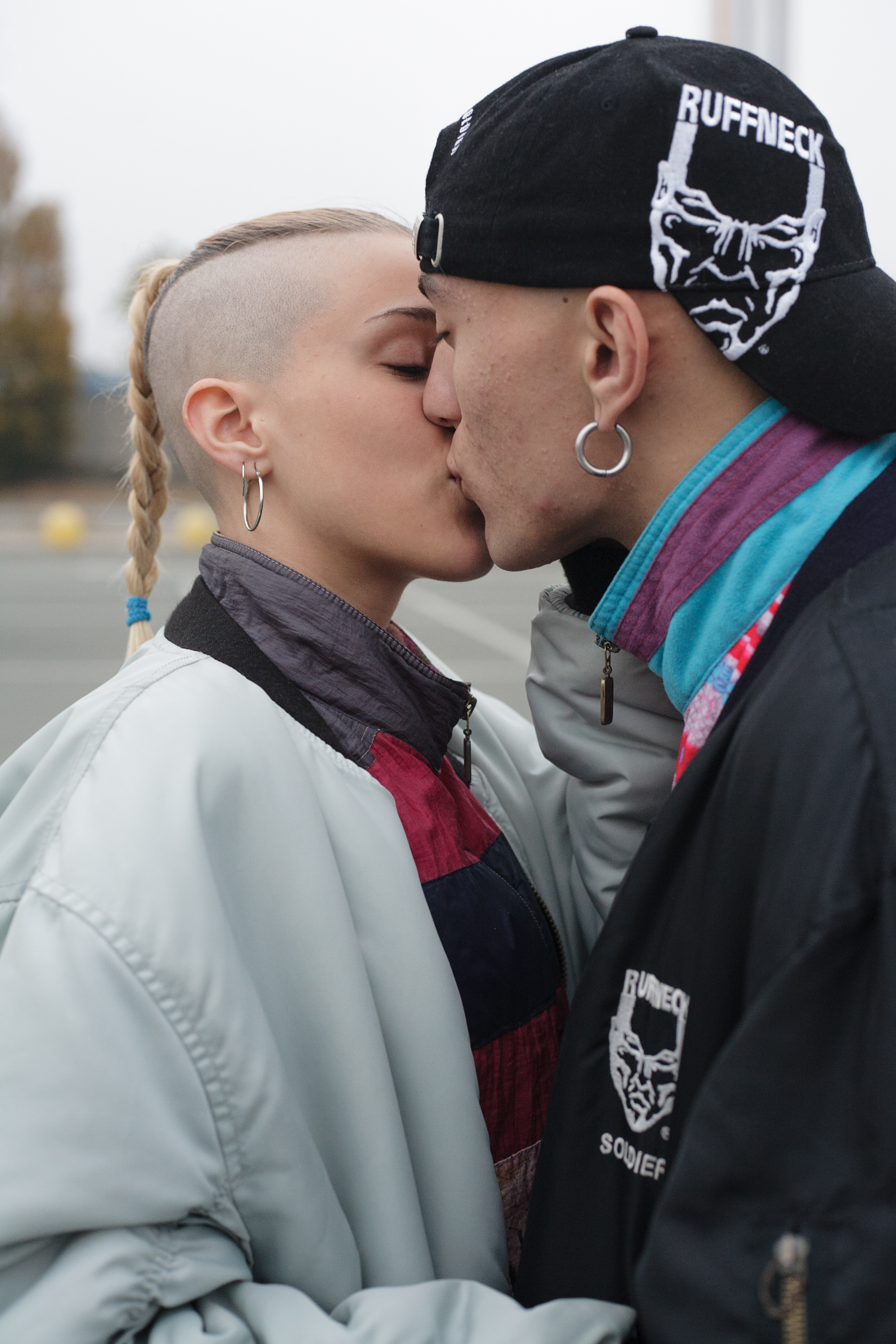
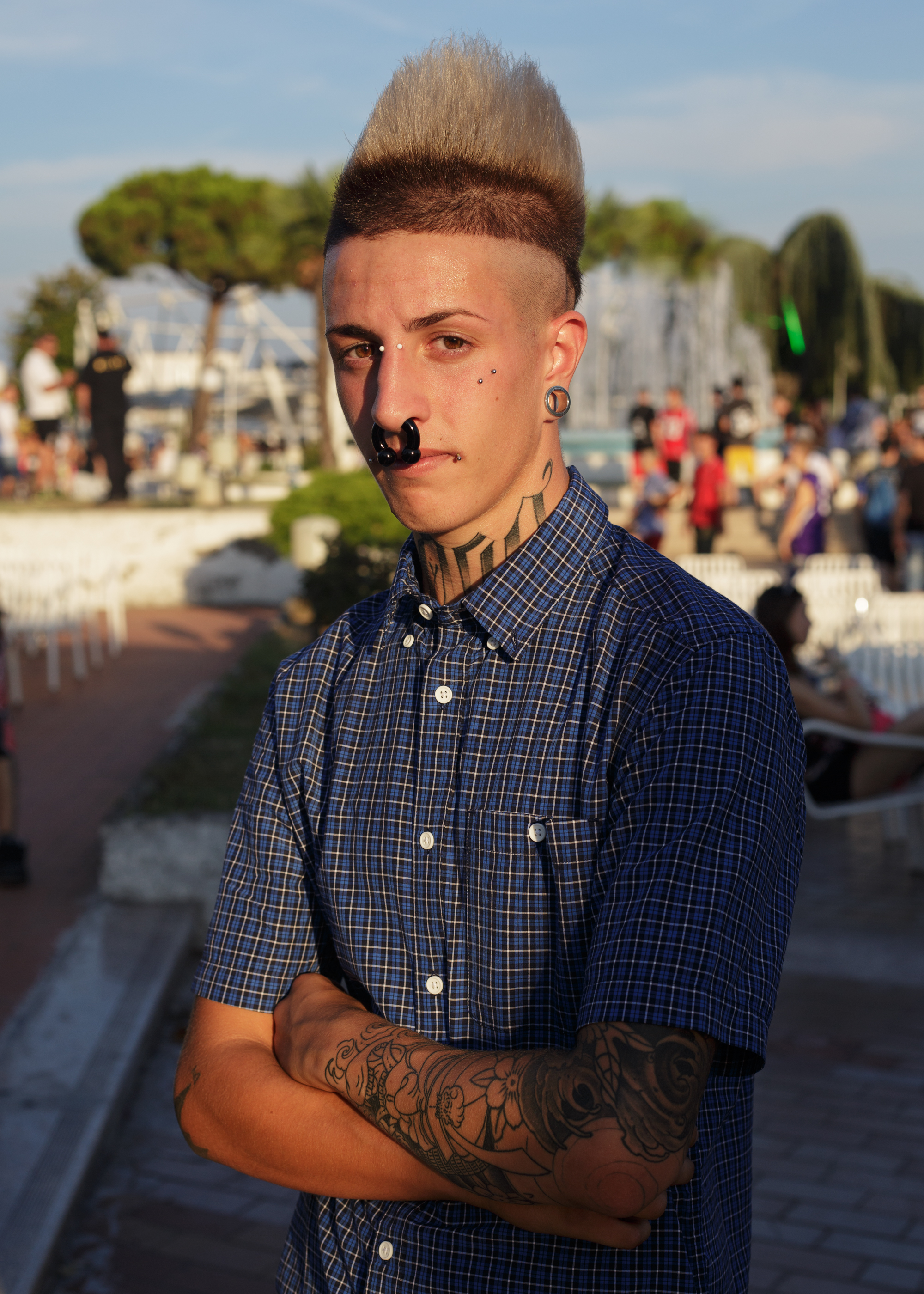
“The way gabber was documented felt unfair and incomplete,” suggests Boris Postma, an Amsterdam-based visual artist, second generation gabber and gabber researcher who, growing up, was “the only gabber in the village”. As with other outspoken subcultures, he suggests, it has proven all too easy for even well-meaning outlets to focus on the grotesque, of which there is plenty in gabber and hardcore: the seas of shaved heads, the garish tracksuits, the raucous dancing, and the clear influence of drugs.
“The video archives are great in their own regard. They’re a gateway to past times, good for historic research and context, and especially appealing for people who are new to it,” he says. “But they don’t tell the story behind the culture. They don’t tell us the history of how things came to be, or the stories of the people living in it.”
What’s needed, he believes, is nuance and honesty. Some have tried. For his 1997 documentary Gabbers!, filmmaker Wim van der Aar spent much of his time outside of the club, in the family homes of ex-ravers. As a result, watching the film, the voices you hear are those of subjects given free reign to tell their stories. Most are forthcoming about gabber’s excesses, yet adamant that the experience of belonging to something larger made it worthwhile. Deeply personal accounts of Energiehal, the Rotterdam spot home to legendary hardcore parties which was demolished in 1999, are full of affection and intricate details. Another account from René Van Zundert’s documentary Hard Voor De Hal recalls large groups of gabbers assembling at the site. Some were in tears, others brought tools to claim their own piece of the building.
Postma’s own pursuit of a more nuanced portrayal reminds us that gabber is the only subculture born in the Netherlands that became a phenomenon elsewhere. His ongoing Planet Core photography series has covered gabber scenes in Italy and Japan, a set of portraits capturing intimacy, camaraderie, buffoonery, and the peculiarities of foreign scenes. Italian gabbers, he says, are more polished than their Dutch counterparts, their bodies in perfect shape and their outfits colour coordinated.
“What surprised me most was how passionate and romantic they were,” he says. “Plenty of couples wanted to be photographed kissing.” The still, sun-washed images are in direct contrast to the chaos of Thunderdome: a chance to reflect, he suggests, away from the extremity of the rave.
German Artist Henrike Naumann prompted similarly detached reflections with her group exhibition Gabber Nation. The first ever Thunderdome took place at the Thialf speed-skating arena, near the sleepy Dutch village of Beetsterzwaag. It’s there that Naumann set up residency in 2016, keen to learn how such an abrasive sound became popular in a peaceful, rural province like Friesland. The answers came quickly: along with an archive of gabber basslines, Naumann’s exhibition featured a video of hardcore-loving Beetsterzwaag youth blowing up an outdoor pavilion built by the village for them to enjoy. Viewers were asked to consider the wider context of gabber that Postma thinks so important, in this case how the blown out kick of a 909 chimes with the often crushing dullness of youth.
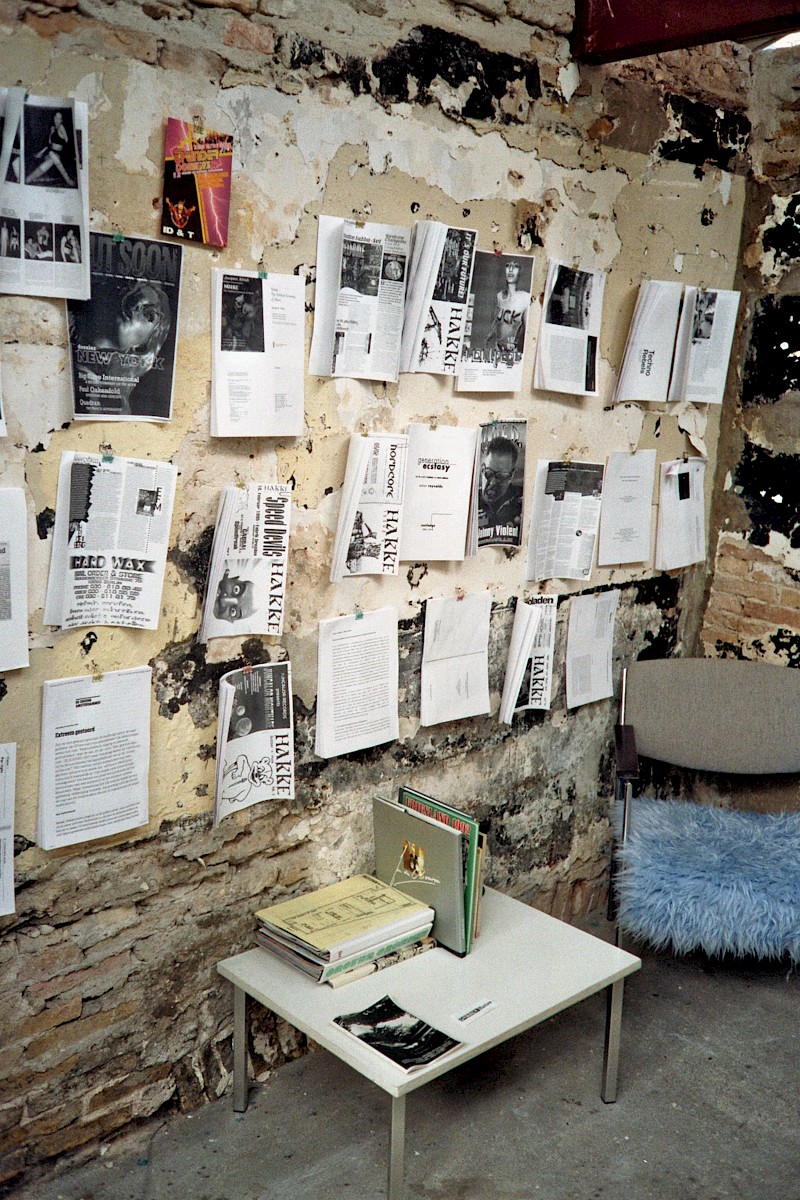
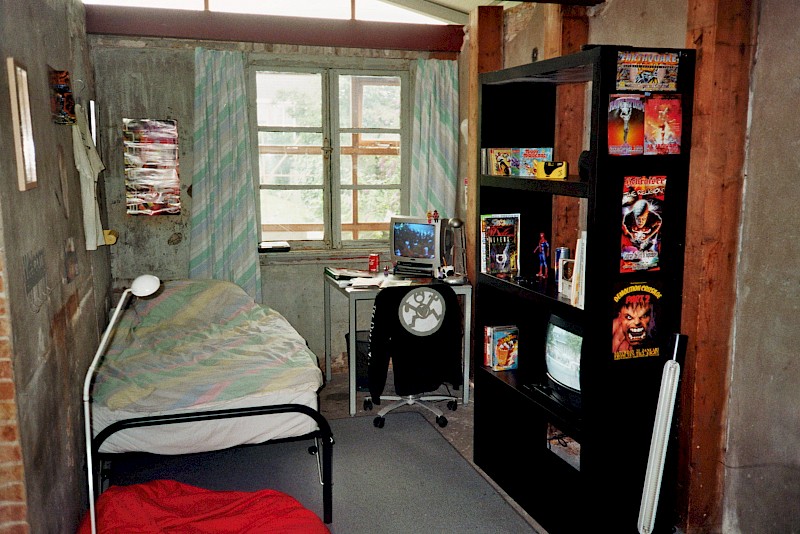
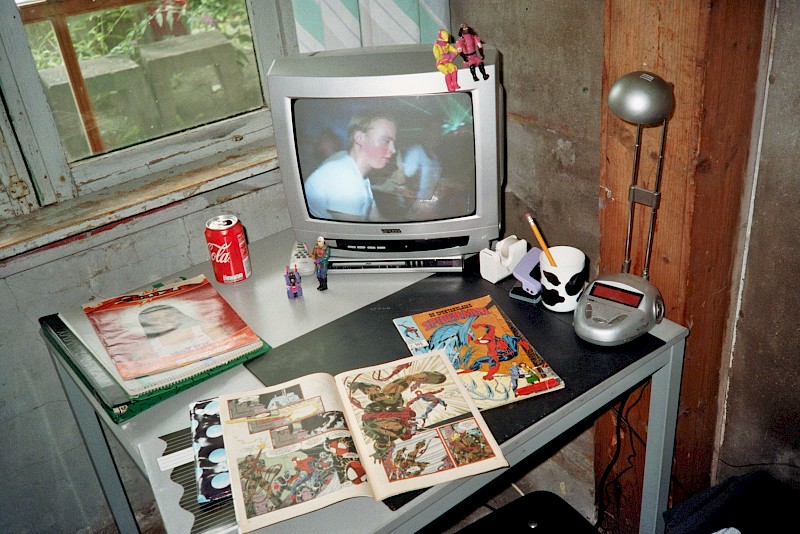
While Instagram accounts and Youtube channels full of high-octane low-res ravers will likely never wane in popularity, these more measured responses are uncovering why the scene has meant so much to so many people, for long. With today’s gabber and hardcore scenes more vibrant than they have been in years, it’s likely that creatives like Postma will carry on finding colourful stories to tell.
And it shouldn’t be hard to find them. Never, Postma says, has he encountered serious resistance in his efforts. “There’s sense of brotherhood in Gabber which I think you find less in more mainstream scenes. I don’t think I’d be able to sleep over at a stranger’s house on the other side of the world simply because we both like techno.” Then again, he concludes, his allegiances to gabber are so strong, he’s never tried.
Written by Xavier Boucherat
A part of Hard Dance, a Boiler Room series exploring the hard and fast fringes of club culture.
